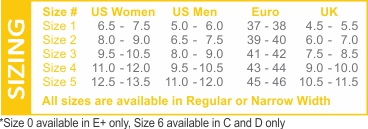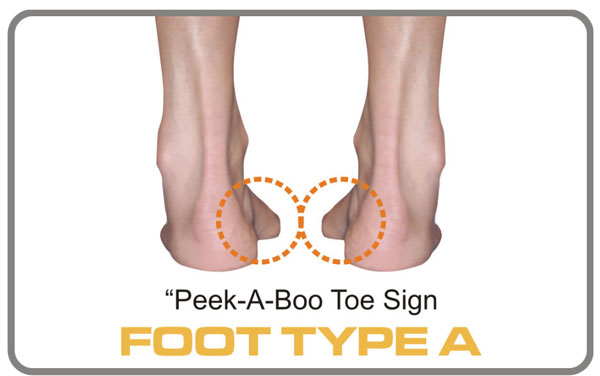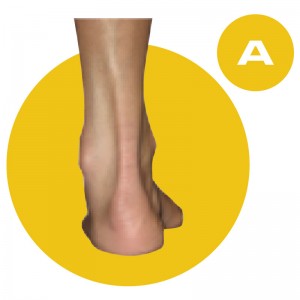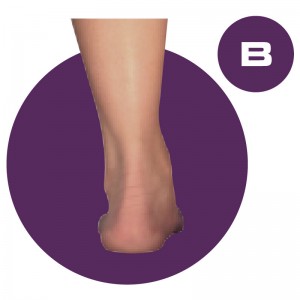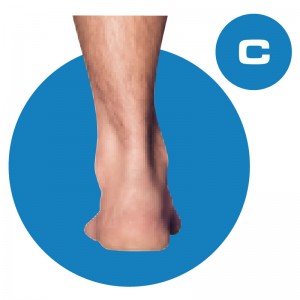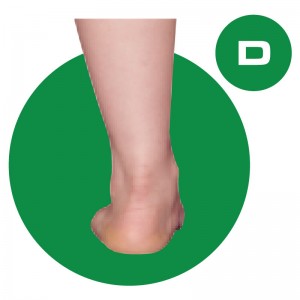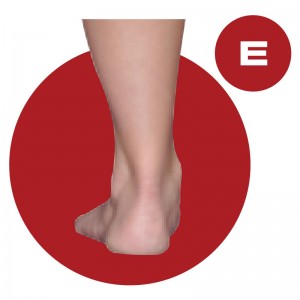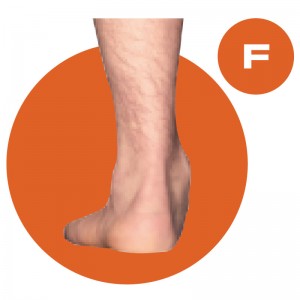A QUAD – Severe Pes Cavus

The A QUAD Foot-Type is commonly thought of as an over-supinated or severe Pes Cavus foot, which means that the foot is rolling out too much. In layman’s terms if you have a very high arch or high instep you could have this foot-type. Other conditions that are associated with this foot-type are hammer toes and even bunions, this is because the toes tend to pull back or become clawed, particularly with age, and corns on the toes can develop from rubbing and pressure from footwear that doesn’t allow enough room for the hammer toes or doesn’t fit correctly. Because this foot tends to roll out more than it should someone with this foot-type is very prone to ankle sprains, and anyone with a history of ankle sprains is probably going to be either the A or C foot-type.
We fondly refer to this foot-type as our “chandelier shakers”! Why? Because this foot-type loads heavily on the ground and never seems to pronate (rolling in), leading to poor shock absorption. Even people with this foot-type who are very petite and don’t weigh much tend to sound very ‘heavy’ on their feet when walking and probably can’t sneak up on anyone easily. This foot type is too rigid and most people with this foot have difficulty adapting to uneven terrain – walking on cobble-stones or uneven surfaces is extremely difficult and uncomfortable.
Every step you take a step your feet have to work as shock-absorbers and a force equivalent to one and a half times your body weight goes pounding through your feet and then up the body if the feet don’t absorb that impact effectively. When you’re running it’s a force of about three times your body weight. Therefore, the development of heel and lower back pain is common because these feet aren’t able to absorb the impacts and forces associated with every step you take. Regarding gait style, the feet point relatively straight ahead during gait (no toe out) with a narrow base of support, putting one foot directly in front of the other as if walking on a tight rope.
All Quadrastep Orthotics are available in Regular and Narrow Widths, and with a topcover an an additional charge.
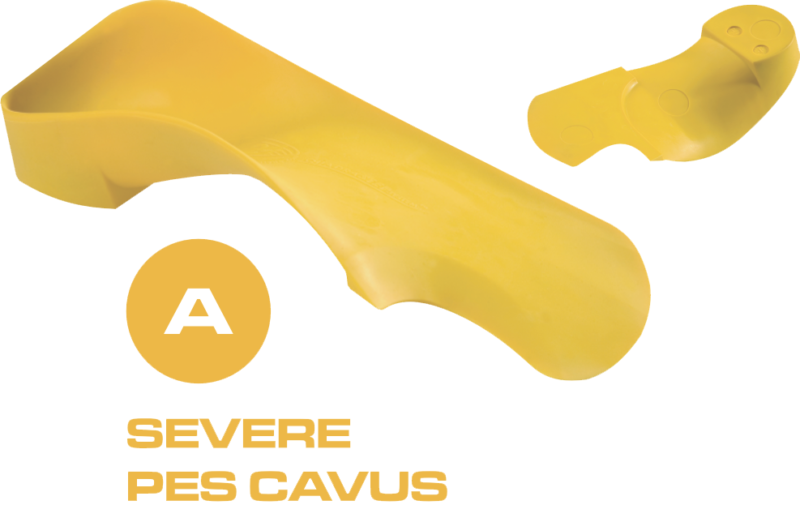
Key Orthotic Features:
- Lateral Forefoot Posting
- 1st MTH Cut-out
- Deep Lateral Heel Cup
- 1/8″ Heel Lift
A Quad Possible Clinical Symptoms
- Lateral Ankle Instability
- Peroneal Tendonitis
- Heel Pain
- 5th Metatarsal Base Pressure
- Lower Back Pain
- Sesamoiditis, Hammer Toes
- Knee Recurvatum
- Poor Shock Attenuation
- Excessive Supination
- Narrow or Cross-over Gait
